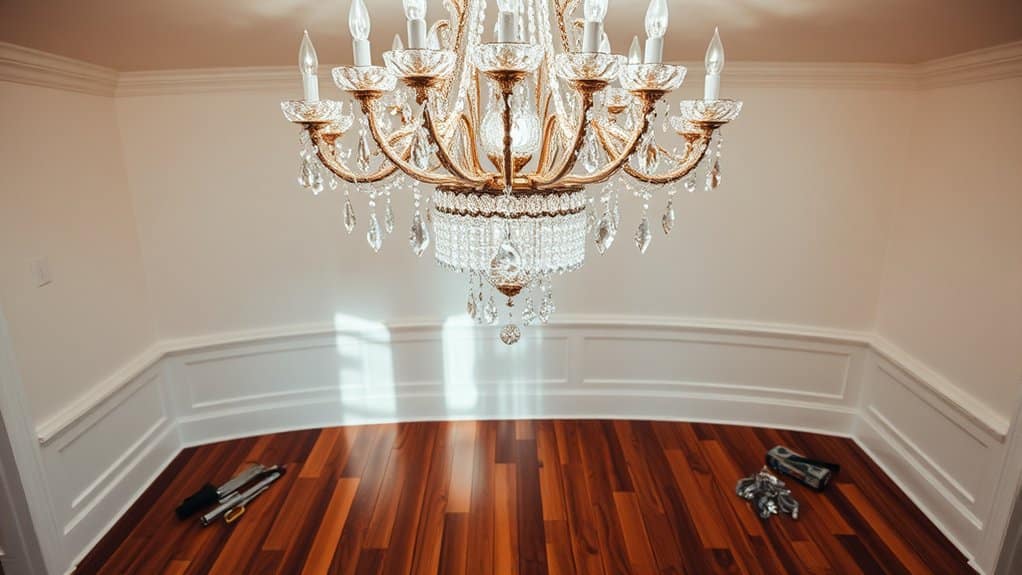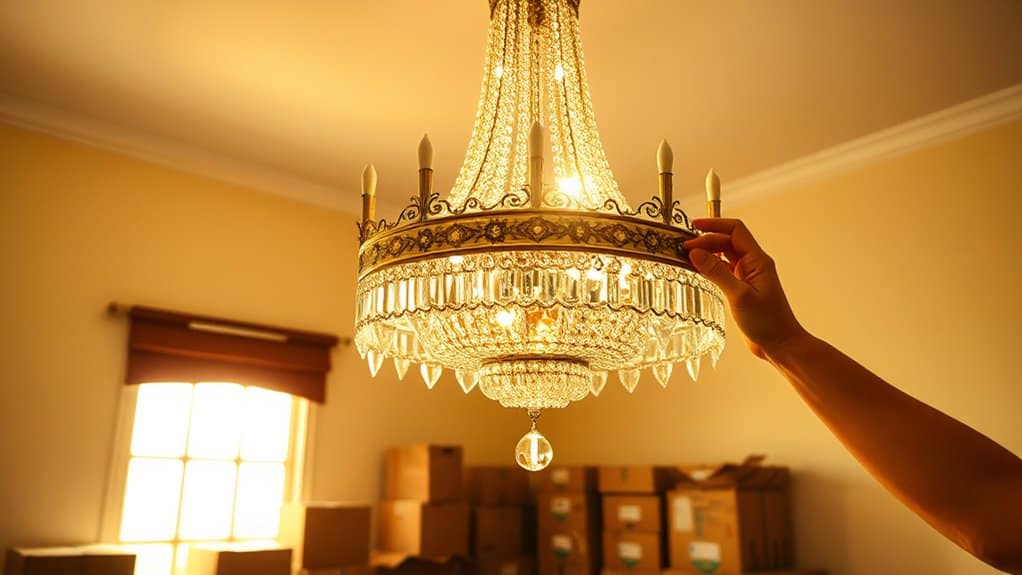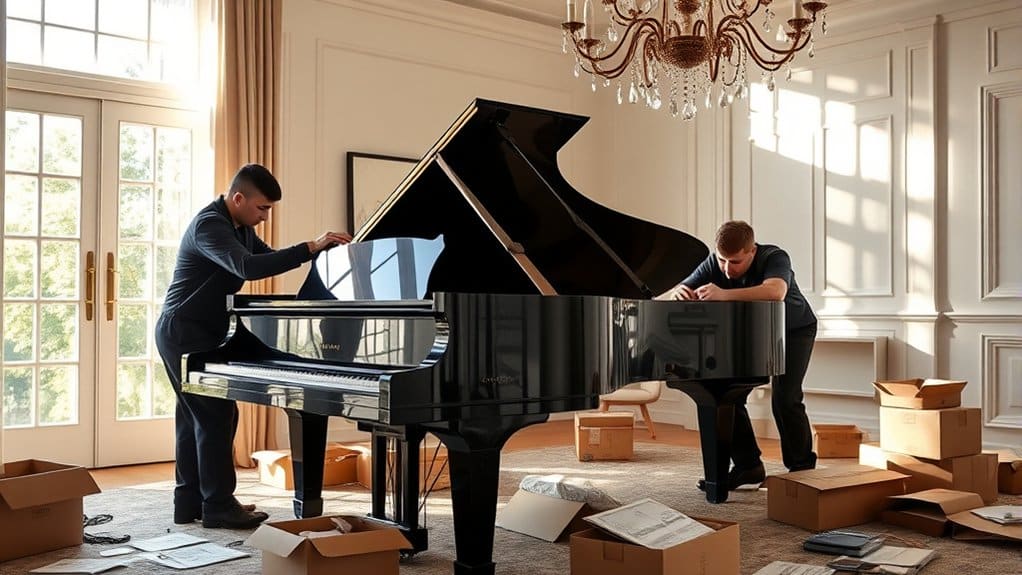Moving between California and New York is a big deal. Doing it with roommates adds a whole extra layer of logistics, money questions, and “who owns what?” drama.
Handled well, a shared move can save everyone money and make the transition smoother. Handled badly, it can blow up friendships, budgets, and your new living situation before you even unpack.
This guide walks you through how to:
- Split moving costs fairly
- Decide who signs the new lease (and why it matters)
- Handle shared furniture and security deposits
- Plan for different move dates (one roommate leaving earlier/later)
- Keep communication clear so no one feels taken advantage of

1. Start with a roommate “move meeting”
Before you get quotes, boxes, or leases, call a roommate meeting—ideally on neutral ground, with everyone present (in-person or on video).
Cover three big questions:
- Where are we going, exactly?
- LA, SF, or another CA city ←→ NYC, Brooklyn, Queens, etc.
- How long do you realistically plan to stay?
- What’s our timeline?
- Move together on the same date?
- One roommate moving first to “scout” and the others following later?
- Open-ended timing (e.g., “within the next 6 months”)?
- What are each person’s priorities?
- Budget ceiling for rent and moving costs
- Non-negotiables for the new apartment (location, commute, pets, room size)
- Length of commitment to the new place (short-term vs. long-term)
Put everything in writing after the meeting and share it in a group chat or doc. This becomes your roommate move “charter” and keeps everyone on the same page.
2. How to split moving costs fairly (and avoid resentment)
Cross-country moving costs can be very different for each person—especially if one roommate has lots of furniture and another mostly has clothes and a laptop.
A. Decide what’s “shared” vs. “personal”
Shared costs might include:
- Moving a shared couch, dining table, TV, or other communal furniture
- Packing materials for shared items
- Any large items being moved solely for the new shared apartment
Personal costs:
- Each roommate’s own bedroom furniture and personal belongings
- Extra services one roommate wants (packing help, insurance upgrades, etc.)
A simple rule: If everyone uses it now and will use it in the new place, it’s shared. If not, it’s personal.
B. Use a formula—not vibes
To keep things fair, choose a formula for splitting shared moving costs:
- Equal split: Everyone pays the same share of shared items (great if belongings and incomes are roughly similar).
- By room size or rent ratio: If one roommate has the master bedroom and pays more monthly, they might pay slightly more of the shared move.
- By item ownership: If one person originally bought the couch, maybe the others cover more of the moving cost or “buy in” to partial ownership.
Whatever you choose, write it down:
“We’ll split shared moving costs equally between the three of us. Personal items are each person’s responsibility.”
C. Don’t forget “hidden” costs
Cross-country roommate moves can include:
- First and last month’s rent + security deposit
- Pet deposits (if only one roommate has a pet, clarify who pays what)
- Application and credit check fees
- Travel costs to get to CA or NY (flight, gas, hotels if driving)
You don’t have to split everything, but you should talk about who’s paying for what before anyone swipes a card.
3. Who signs the new lease (and what that really means)
In a CA↔NY roommate move, the lease structure can matter more than you think.
A. Joint vs. individual leases
- Joint lease – Everyone is listed as a tenant.
- Pros: Legal responsibility and rights are shared.
- Cons: If one person bails, the others are still fully responsible for the rent.
- One primary tenant + subtenants
- Pros: Sometimes easier to get approved; one person deals with landlord.
- Cons: The primary tenant is legally on the hook; subtenants may have fewer protections.
Research the norms in your destination (NYC or a specific CA city), but never assume the setup is the same as your current home.
B. Questions to answer together
- Who has the strongest credit score and income for the application?
- Is anyone uncomfortable being the only person on the lease?
- What happens if one roommate needs to leave early?
If one person ends up as primary tenant, consider a roommate agreement that covers:
- How much each person pays in rent and utilities
- How much notice is required if someone wants to move out
- What happens if there’s damage caused by one roommate or their guest
It doesn’t have to be a fancy legal document; a simple written agreement signed by everyone can prevent a lot of future conflict.

4. Shared furniture and “who owns what”
Furniture is where roommate drama loves to live. Avoid “But I thought that was mine” fights by clarifying ownership before you move.
A. Make a furniture inventory
List all major items:
- Sofa
- Coffee table
- Dining table and chairs
- TV and TV stand
- Rugs
- Lamps and decor
Next to each item, label:
- Owner (Roommate A, B, C, or “shared”)
- Whether it’s moving or being sold/donated
- Who gets the proceeds if it’s sold
B. Decide what happens if someone leaves
There are three common approaches:
- The owner takes it
- If the original buyer leaves, they take the item (or sell it).
- Buyout option
- Remaining roommates can buy the item at an agreed value.
- Sell and split
- The item is sold and proceeds are divided according to ownership shares.
Spell this out now, not when someone’s halfway packed.
Example clause you can adapt:
“If the roommate who originally purchased a shared furniture item moves out, they may take the item with them, or the remaining roommates may buy it at an agreed upon value. If we can’t agree, we’ll sell it and divide proceeds proportionally.”
5. Planning for different move dates
Sometimes roommates aren’t on the exact same timeline. One person might move to NYC early for a job, while others follow a month or two later. Or someone might stay in California after others leave.
A. When one roommate moves first
Questions to answer:
- Who pays rent on the new place if only one person has moved in?
- Will the first roommate live with minimal furniture and wait for the group move, or will they pay extra to ship basics early?
- If the early mover picks the apartment, does everyone agree to the choice?
A fair approach:
- If the early mover is using the space, they might pay a larger share of rent until others arrive.
- Shared furniture could be shipped once and timed closer to when everyone’s there.
B. When one roommate moves later—or not at all
Sometimes a roommate backs out or delays indefinitely. To protect yourselves:
- Don’t sign a lease that only works financially if everyone definitely comes.
- Talk about a backup plan (filling the room with a new roommate, adjusting rent splits, or downsizing later).
- Set a “decision date” – e.g., “You need to confirm by X date if you’re moving with us; after that, we’ll plan as if you’re not.”
6. Roommate communication: how to avoid conflict (and resentment)
Most roommate issues don’t come from the costs themselves—they come from surprises.
A. Keep all money talk transparent
Use:
- A shared spreadsheet for costs and who paid what
- A group app like Splitwise for ongoing payments
- Clear deadlines: “Rent is due on the 1st, but send your share by the 28th.”
If someone consistently pays late or avoids financial conversations, that’s a red flag—better to address it early than bring it into a cross-country move.
B. Have a “what if it doesn’t work out?” conversation
It’s uncomfortable, but helpful:
- What if one of you hates NYC and wants to move back to California after six months?
- What if someone loses their job?
- What if two roommates stop getting along?
You can’t predict everything, but agreeing on basic principles (“We’ll always give each other at least 60 days’ notice before leaving if possible”) makes crisis decisions easier.
7. Choosing and using a CA↔NY moving company as roommates
When you’re moving multiple people’s lives across the country, a reliable mover becomes even more important.
A. Decide how you’ll work with the mover
Options:
- One shared shipment – All belongings together, clearly labeled.
- Pros: Often more cost-effective; one pickup and one delivery.
- Cons: Requires more organization and trust; mix-ups can happen if labeling is poor.
- Separate shipments – Each roommate books their own move.
- Pros: Clear responsibility; less confusion over who owns what.
- Cons: Can be more expensive overall and harder to coordinate.
If you choose a shared shipment, agree on:
- Who will be the primary contact with the moving company
- How you’ll split the total cost (and when payment is due)
- How you’ll label and track boxes by roommate
B. Label like your friendship depends on it (because it kind of does)
For each box:
- Use a consistent system: e.g., “A-1, A-2” for Roommate A, “B-1, B-2” for Roommate B, etc.
- Keep a simple list of contents (“B-3: kitchen supplies, mostly mugs & bowls”).
- Mark shared boxes clearly (“SH-1: shared pots & pans”).
If something gets lost or damaged, you’ll at least know whose stuff it was and what was inside.
8. Quick roommate move checklist (CA↔NY)
8–12 weeks before move
- Hold your roommate move meeting
- Decide on destination neighborhood(s) and rent range
- Research and shortlist CA↔NY moving companies
- Discuss lease options and who will be on it
- Make a shared vs. personal furniture inventory
6–8 weeks before move
- Get in-home or virtual moving quotes
- Choose your mover and reserve dates
- Agree on cost-sharing formula and write it down
- Start decluttering and selling unused furniture
4–6 weeks before move
- Apply for your new apartment
- Confirm who signs the lease and deposit splits
- Buy packing materials (or add packing services)
- Begin packing non-essential items and labeling by roommate
2–3 weeks before move
- Finalize utility setup for your new place
- Confirm travel plans (flights or drive)
- Double-check who’s paying what and when
- Revisit your roommate agreement and adjust if needed
Moving week
- Stay present for packing and pickup if possible
- Take photos of shared items and furniture condition
- Do a final walkthrough of the old place together
- Confirm who handles key returns, final rent, and deposit communication









